By MALUM NALU
NB: This story was first published in 2010.
Back in 2010, I was pleasantly surprised to receive some amazing old photographs of Lae from Denis Murrell, a former teacher at the iconic Bugandi High School.
He taught at Bugandi from 1968-1971 and had fond memories of Bugandi and Lae the way they used to be.
Murrell’s pictures include those of the school entrance with the Mercedes-Benz of legendary Bugandi principal (headmaster) Jack Amesbury in the background.
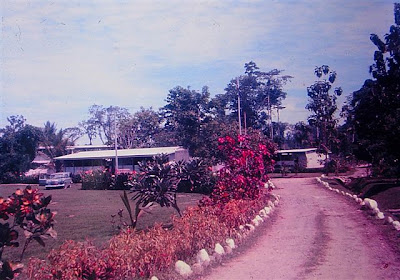
Under Amesbury’s guidance, Bugandi became a great and famous school – a far cry from what it is today – producing many students who went on to become academic, political and business leaders in Papua New Guinea.
“I was sent to teach at Bugandi High School in January, 1968,” Murrell remembers.
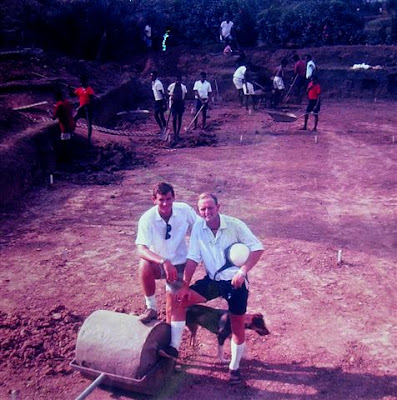
“It was my first teaching position apart from a short spell practice-teaching at Goroka High School.
“I saw Bugandi for the first time from the back seat of the principal’s Mercedes-Benz: a neat set of single and double-storeyed buildings situated behind lush, green, well-tended parkland and sports ovals bordered with red canna lilies planted by teacher, Jock Maloney, many years before, variegated crotons and painted, white stones.
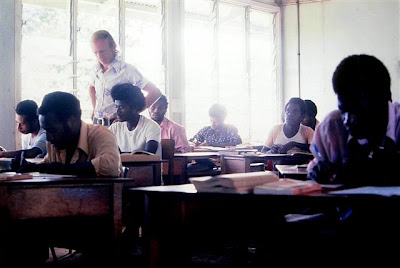
“Bugandi had been built on the site of a former swamp, a place where people said it would be impossible to build anything.
“At first, just 10 acres were cleared of rainforest and a mess, two houses, a dormitory and two classrooms were built.
“That was in 1959 and amazingly, classes began soon after Jan 21, 1960.
“The school was called Bugandi Upper Primary School and there were just 78 students in standards 7, 8 and 9 and three teachers, two from overseas and one Papua New Guinean.
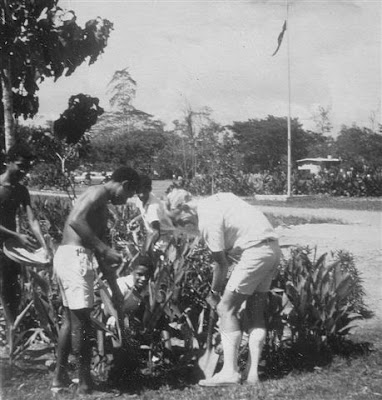
“By 1962, the name had been changed to Bugandi Junior High School and in the following year, a man famous throughout the land, Jack Amesbury, was appointed as principal.
“He worked successive groups of students hard over the years, to take the land back from the water, fell trees, clear undergrowth, build roads, plant lawns and gardens and construct playing fields and livestock pastures and I could see the results of this hard work as I travelled down the driveway in Jack’s car.
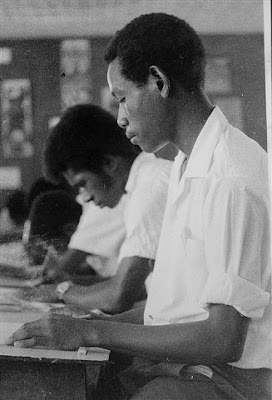
“The school had become a full high school in 1965.
“There were 257 students by then, enrolled in forms 1 and 2, but in 1966, Bugandi began enrolling students from all over the New Guinea mainland and forms 3 and 4 were begun.
“In 1968, for the first time, 87 boys sat for the intermediate certificate while another 58 sat for their school certificate examination.
“When I arrived there were problems; Jack was trying to develop another oval in order to accommodate all the rugby league teams that played at the school each week, but the trees were found to be full of shrapnel.
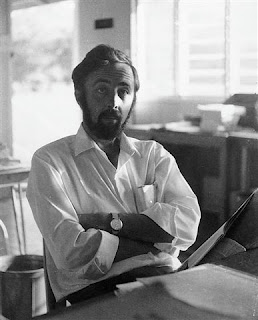
“The area closer to the Markham River had been a battleground between Australian and Japanese troops in the Second World War and students often found bits and pieces of Japanese war materiel and occasionally dangerous, unexploded bombs.
“So after 1968, no new land was opened up and a consolidation began.
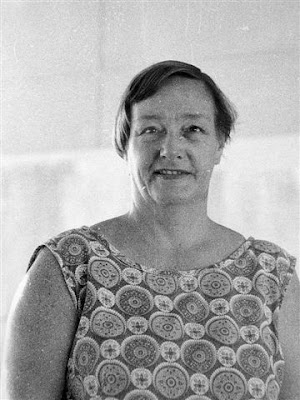
“Existing buildings were improved or extended.“The last piece of land developed was an Australian football oval while the last building erected during my stay was a chapel/assembly hall.”
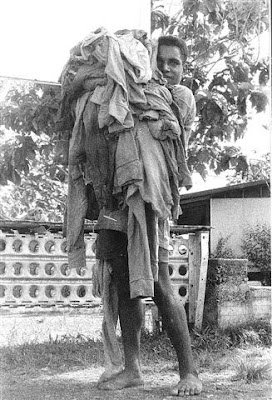
Murrell remembers Amesbury as a stocky, sandy-haired man with a demanding expression and occasional wry smile, a former Royal Australian Navy man.
“He had been present on an Australian vessel at Wewak during the surrender of the Japanese and, consequently, he ran his school like the huge naval ship that he had been used to.
“Jack always referred to his students, no matter how young, as ‘men’ and his first words at every assembly were always ‘right men! on deck!’
“The students were up at the crack of dawn to shower in the ablution blocks.
“They ate a breakfast of wheat-meal cakes with jam and hot tea in the mess and then listened to the morning news on 9LA as they prepared for lessons.
“Some boys were rostered each day to keep the area around their dormitories clean and tidy.
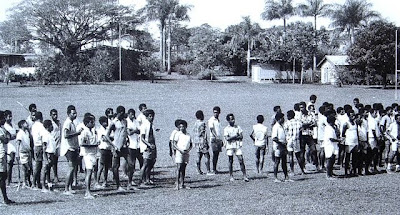
“They wore government-issued white cotton drill shirts and navy or khaki shorts.
“Assembly was at seven sharp and no-one, absolutely no-one, was ever late.
“The assembly area in those days was to the right of the main drive-way into the school, in front of Jack’s office and the small staffroom, which was quite inadequate for a staff of 24.
“After assembly, English master, Charles Cazabon, and his staff, would take all the form one students to the two messes for 20 minutes of English language drills, while the other students went straight to classes.
“Students were punished for speaking their own village languages and Tok Pisin.
“They were required to speak English at all times and were reported to the principal by the prefects if they did not.
”During lessons, Jack Amesbury would often suddenly appear at a classroom window and take all the boys – Bugandi was a boys’ school in those days – and the teacher, out to work on the school farm or some other task.
“Classrooms had usually 25 double-desks accommodating up to 50 students per class.
“Sometimes there was a cupboard and for the teacher, there was a table – but no chair.
“Jack Amesbury didn’t like his teachers to sit down during their lessons.
“Some teachers would sit on a desk or even on the table but would always keep a wary eye out for an approaching principal.
“If you were caught sitting during a lesson, you could expect to be scolded in a way that only Jack could manage, and in front of your students too.
“Lessons for the students finished at 1pm and were followed by lunch, usually consisting of kaukau, other vegetables and soup.
“Boys rostered to mess duty helped the cooks to serve and clean up.
“The school was divided in to four houses and one house had to do work parade one day per week, all afternoon, until about 4.30.
“Some boys worked on the farm or at caring for the flower gardens, some cut grass with their serifs around teachers’ homes, while others cleaned the ablution blocks.
“Some boys worked on special projects like building the new swimming pool, or constructing the fish ponds, the new chapel/assembly hall or the tractor shed, while others ran the school tuck-shop operated by the Bantin Co-operative Society, whose president was Utula Samana.
“Selected boys helped Charles Cazabon in the library and others helped me to print t-shirts in the art room.
“After work parade, the students could relax until dinner or perhaps do their laundry.
“Dinner consisted of rice, instead of kaukau, and some green vegetables like aibika or spinach with some bully-beef or tinned mackerel.
“Immediately after that, from 7 until 9, boys went for night study in their classrooms, supervised by duty teachers.
“No-one could be late or absent without a good reason and the duty teacher would count the students present in each room.
“Following that, students were then free for an hour but had to be in bed by 10pm, lights-out time.
“Students could go into Lae town with permission on Saturdays and Sundays but they had to be back in their dormitories by midnight on Saturdays and 10pm on Sundays and the duty teacher and prefects would be waiting to catch those who might be late.
“There was usually a small group of boys up for punishment on Monday mornings for being back late.
The school, according to Murrell, had 20 prefects appointed by Jack Amesbury and presided over by the school captain and his deputy.
“These two students were in control of over 300 boys who not only studied, ate, slept and worked but who also took part in such things as debating, art activities, the Cadet Corps, first aid activities, scouting, civil defence, preparing the school magazine, the Duke of Edinburgh award scheme, traditional dancing, the organisation of the annual school mumu, and of course, sport.
“They played rugby league, Australian football, hockey, basketball, cricket, volleyball and baseball.
“Many teams from all over Lae played in a rugby league competition held at the school each Saturday and every Bugandi student was required to take part.
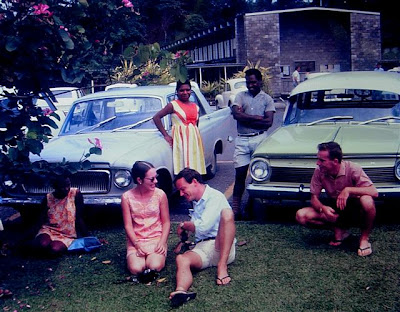
“On Friday nights, students watched a 16mm movie flown over from George Page’s store in Port Moresby, movies like ‘Elephant Walk’ or ‘Giant’.
“During that first year and during the three further years I taught at the school, I cannot remember any boy not working hard to prepare for his future.
“In the late sixties, it was not easy for a boy to go to high school and boys who were selected used their lucky chance wisely.
“They knew that any boy who didn’t follow the Bugandi way of doing things could be immediately dismissed and sent back to his village.”
Proud of Bugandi💙 Those of us who grew up in Lae but did not attend the school will still relate.
My children are proud of their school although it’s not in it’s former glory.
Slowly but surely it will get there.
It needs discipline on all fronts.
Very true, Jessie.
Bugandi needs discipline and management on all fronts to get it back to its glory days.
We need another ‘Jack Amesbury’ to resurrect Bugandi.
I attended Lae High School (as it was known then) and my last year in high school was 1963 (as I attended Perth Ladies School in earlier years).
Jack Amesbury was a great Head Master/Teacher/Mentor – he was a brilliant human – he often dropped into our home (Seventh Street) to chat with my father Ken Jones MBE to discuss issues he had at times
If my memory serves me correctly, in November 1963, there was a shouting at the school which sadly resulted in the death of a young man (I’m fairly sure this happened on the same day – or very close to the day – as the shooting of President JFK in USA) and Jack handled the situation calmly with such care and compassion
I had fond memories of my short time attending LHS.
Glenda Clapp (Nee Jones) (lived in Lae 1952 to 1972)
Thank you, Glenda, for for sharing your wonderful memories of Lae, Lae High School and Jack Amesbury.
You are truly a Meri Lae (Lae Girl).
Thank you also for the contributions of your family to Lae and Papua New Guinea.
I attended Bugandi Secondary School in 2011.
I was supposed to go to Lae Secondary School, but I admired Bugandi a lot, that’s why I choose Bugandi to do my secondary level.
I was a proud Bugandi student, and despite all the fighting and disruption of classes due to fighting between cult groups, I still managed to get good grades after year 12.
I believe Bugandi will become a great school like before back in 70s and 80s .
Once a BCB, always a BCB.
Thanks for the write-up.
I attended Bugandi High School from 1971-1974.
I was the Vice-Captain in 1974.
It was still then still for boys and men only.